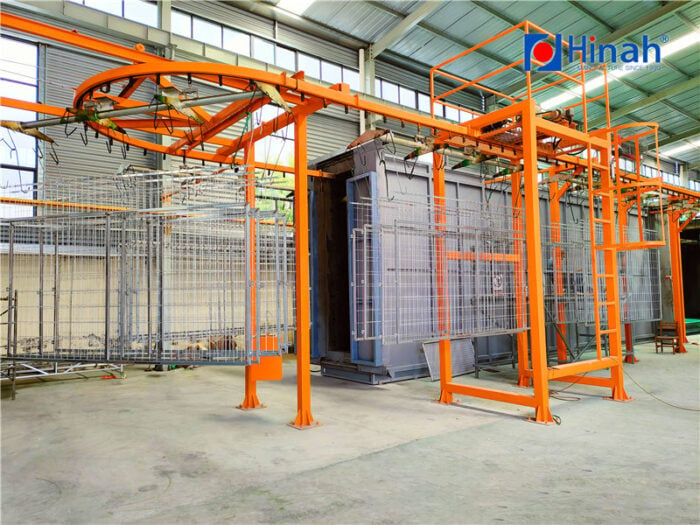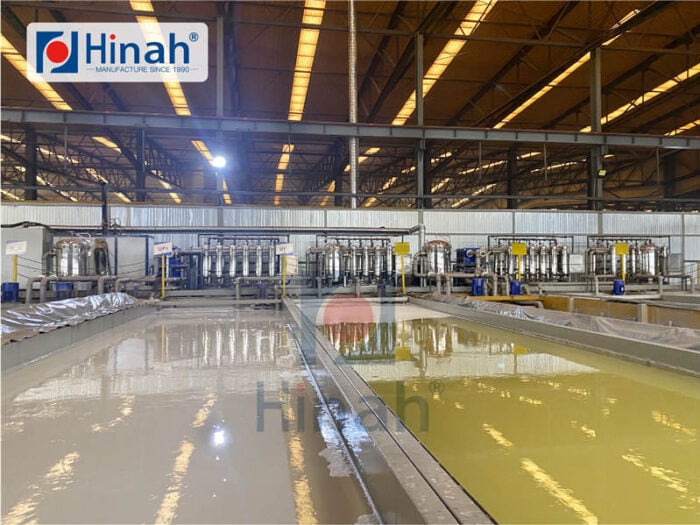Comparison of two types of pretreatment of metal parts before spraying
Pre-treatment is one of the key steps in ensuring the quality and durability of the coating before painting metal parts. The pretreatment of metal process removes dirt, oxides and other surface defects, providing better adhesion and protection for the coating. In this paper, we will compare two common types of pretreatment for metal parts: mechanical and chemical pretreatment, and discuss their advantages and disadvantages.

I. Mechanical pretreatment
Mechanical pretreatment is a method of treating metal surfaces by physical force and mechanical means. Common mechanical pretreatment methods include grinding, polishing and sandblasting.
Advantages:
a) Dirt removal:
Mechanical pretreatment can effectively remove impurities such as grease, dust and stains from the metal surface, ensuring that the coating adheres to a clean surface.
b) Surface roughness control:
By mechanical treatment, the roughness of the metal surface can be controlled to provide better adhesion for the coating.
c) Energy saving:
Compared to some chemical pretreatment methods, mechanical pretreatment usually does not require the use of large amounts of energy and is more environmentally friendly.
Disadvantages:
a) Time and labor cost:
Mechanical pretreatment usually requires longer time and a lot of labor, especially for large parts.
b) Risk of surface damage:
Improper mechanical pretreatment may result in scratches or dents on the metal surface, affecting the quality of the coating.
c) Limitations:
Mechanical pretreatment methods may be less suitable for some special shaped metal workpieces, such as complex curves or fine holes.

II. Chemical pretreatment
Chemical pretreatment is a method of treating metal surfaces using specific chemicals. The most common chemical pretreatment methods include pickling, phosphating and electrochemical treatment.
Advantages:
a) Adhesion enhancement:
Chemical pretreatment can form a special layer of chemicals on the metal surface, providing better coating adhesion.
b) Corrosion protection:
Some chemical pretreatment methods can form a protective layer against corrosion on the metal surface, extending the life of the metal.
c) Broad applicability:
Chemical pretreatment methods are suitable for all forms and sizes of metal workpieces, including complex shapes and fine holes.
Disadvantages:
a) Environmental impact:
Some chemical pretreatment methods may use hazardous chemicals that can pollute the environment and require proper disposal of waste liquids.
b) Corrosion risk:
Incorrect chemical pretreatment or over-treatment may lead to corrosion of the metal surface, negatively impacting the quality of the coating.
c) Dependency:
The effectiveness of chemical pretreatment methods is influenced by environmental factors and operating techniques, requiring strict control of conditions and expertise.

III. Comprehensive comparison:
Mechanical pretreatment and chemical pretreatment have their own advantages and disadvantages.
Mechanical pretreatments are suitable for general metal workpieces and can remove surface dirt and control roughness, but may require more time and labor, and carry the risk of surface damage.
Chemical pretreatments, on the other hand, provide better adhesion and corrosion protection and are suitable for metal parts of all shapes and sizes, but may cause environmental contamination and require strict conditions and operational controls.
The best choice depends on the specific application needs and practicalities. A combination of workpiece type, coating requirements, cost and environmental factors should be considered when developing a pretreatment program. In addition, regular maintenance and inspection of pretreatment equipment and processes are critical to ensure pretreatment results and coating quality to improve the durability and appearance of metal workpieces.

IV. Summary
In summary, metal part pretreatment plays a critical role prior to coating. Mechanical pretreatments are suitable for general metal parts to remove dirt and control surface roughness, while chemical pretreatments provide better adhesion and corrosion protection. Choosing the right pretreatment method should be a comprehensive evaluation based on specific needs and practicalities, while ensuring that equipment and processes are maintained and inspected to ensure the best results in pretreatment effectiveness and coating quality.






